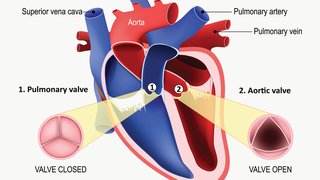
People often think of medicine as the fix for problems or injuries. We watch and wait, and when a health condition develops, we take action. But this sit-and-wait approach to heart health is not good enough. In fact, it’s in direct disagreement with the physicians’ motto: First do no harm. I take that to mean: Also prevent harm.
Historically, doctors and patients have monitored slow-growing risk factors such as blood sugar and cholesterol and waited to act until the numbers are “bad.” Instead, we should proactively move people toward optimal health, trying to preserve the good health with which we are born rather than settling for numbers that are “OK” or “borderline.”
Heart disease preventive care should be a mainstay for everyone, particularly people at higher risk for heart diseases. Preventive cardiologists like ours in Dallas are rare, even in bigger-city hospitals. This is a specialty that benefits the community by digging deeper through training and research to prevent and treat conditions that may not be recognized by general cardiologists.
Though every person could benefit from seeing a preventive cardiologist, there are four main categories of people that we think benefit most from coming to see us. Let’s go through why people in these four groups are at increased risk and how we can help improve their heart health – or prevent heart disease altogether.
1. Strong family history of heart disease
Individuals in this group may have gene issues with which they were born that increase their risk of a heart attack, even if they eat right and exercise regularly. In some cases, we do genetic testing for specifically heritable cholesterol disorders. However, most heart disease is caused by several genes, not just one, and there are few, if any, “smoking gun” genes currently identified that lead to heart disease in families.
People with a strong family history of heart disease, particularly in their parents and siblings, should be screened for its risk factors, including using advanced blood tests. Often, we will screen them with imaging tests of the blood vessels, such as a coronary artery calcium scan, to better determine if they have inherited the same pattern as their family member with heart disease.
When these patients come to see us, they’ve often been over- or under-treated for their condition. Their primary care doctor may have assured them that they had nothing to worry about because their cholesterol and blood pressure were in the normal range. But what if their family members also had normal blood pressure and cholesterol and still had heart attacks, as often is the case when there is a strong family history? Or we see the opposite – the doctor orders multiple tests, and the results of one out of 10 are abnormal, so the doctor tells the patient something is terribly wrong, which may not be the case.
Unfortunately, though people in this category usually are aware of their family history of heart disease, they may think the risk doesn’t apply to them. But it does, and I urge everyone in this category to see a preventive cardiologist to assess their risk.
If we screen for and discover a genetic mutation before the disease develops, we can reduce the patient’s risk and the risk of other people in the family who also may carry the mutation. In fact, we partner with the pediatric cardiologists at Children’s Health to make sure kids who carry these mutations are set up with the tools to lead heart-healthy lifestyles.
We’ll help you determine which tests are really needed and set up a treatment plan, including lifestyle modifications and potentially medications, that can reduce your risk for heart attack and other heart conditions.
2. Personal history of early-age heart disease
Having a heart attack or stroke at a young age is unusual. We shouldn’t see heart attacks in people younger than their mid-60s. Still, we see many people in their 30s, 40s, and 50s who have heart disease. And, as mentioned above, these people establish a history of heart disease in their families.
In these young patients, we have to think outside the box to prevent further heart disease and damage. The causes of heart disease can vary greatly, so the approach to treatment should be specific to each patient. The “usual” approach to heart disease management – standard treatments and testing – is not good enough because their heart diseases don’t follow the usual pattern.
Early-age heart disease patients usually need more aggressive care. Sometimes we have to screen for additional factors and do further testing to determine the cause of their disease. We often use new treatments or emerging concepts for risk factor management that are based on the latest science and research. For example, one of the newest and most potent cholesterol treatments, PCSK9 inhibitors, were partially developed through research at UT Southwestern, and several of our patients were involved in clinical studies of these drugs.
If someone has a heart attack or stroke younger than 55 for men or younger than 65 for women, their family members should consider seeing a preventive cardiologist as well. We can assess their heart disease risk, then provide a plan for regular screening and risk reduction.
3. Significant cholesterol disorders
People in this group often have extremely high cholesterol that can’t be lowered by lifestyle or diet changes. There’s almost always a genetic cause for this, and we have to get to the bottom of it before we can find a treatment that works for them.
One challenging cholesterol problem we treat is a genetic disorder called familial hypercholesterolemia (FH). People who have FH have a mutation that causes extremely high cholesterol and early-age heart attacks. Two UT Southwestern doctors, Joseph L. Goldstein, M.D., and Michael S. Brown, M.D., won the Nobel Prize for the discovery of this mutation and their research surrounding it.
Our experience with cholesterol disorders allows us to provide a different approach to care than these patients can receive elsewhere in the community. We can provide earlier and more aggressive treatment with access to new drugs as they are developed to lower cholesterol.
An advanced cholesterol treatment we provide is filtering cholesterol from the blood through a process called apheresis. As of June 2017, we are one of just 60 centers in the United States that can provide this treatment. We also have a partnership with our cholesterol specialists here and the cardiologists at Children’s Health to screen kids for FH after age 2 and make sure they get the right care.
4. Multiple uncontrolled risk factors
People in this group have the typical risk factors for heart disease: uncontrolled high blood pressure, high blood sugar or diabetes, obesity, smoking, unhealthy diet, and lack of exercise. Each is a risk factor on its own, but when they come together (as they often do), it makes preventing and controlling heart disease more complicated for patients.
People with multiple heart disease risk factors require a team of physicians to help them make all of the required changes. One physical exam a year isn’t enough, and one doctor alone can’t manage all these changes. Patients need real-time support and feedback to turn their habits and risk factors around.
Related reading: How doctors squeeze in exercise, and how you can, too
We enjoy helping patients like this. Our dietitians, nutritionists, cardiologists, and nurse practitioners want you to succeed – we don’t want you to get sick or sicker and have to come see us for those reasons. We’ll help you stick to your plan and improve your heart health. One of the key ways we do this is by monitoring your heart health numbers, helping you understand what they mean, and giving you the right tools to meet your goals.

Know your numbers
If you’ve seen a primary care doctor or cardiologist before, either has likely given you the “know your numbers” talk. This refers to the key risk factors for heart disease, which include:
If you test on the high side for any of these numbers, you could benefit from seeing a preventive cardiologist – even if your regular doctor says you’re in a normal range and it’s fine, and especially if you have a personal or family history of heart disease or heart attack.
A preventive cardiologist can help decipher your test results and determine your and your family members’ heart disease risk. And we’ll help you and your family get the right tests to find a treatment plan for you, if you need it.
Heart disease is the No. 1 killer in the United States. Seeking care from a preventive cardiologist before heart disease develops can help you lower the risk and pay off in huge health benefits later.
- BMI: Your body mass index is the ratio between your weight and height. This measurement isn’t an end-all, be-all because it doesn’t account for muscle mass, but it’s important to pay attention to it. High BMIs are linked to increased risk for heart disease and other diseases, including certain types of cancer.
- High blood pressure: A reading of 140/90 is considered high, but remember that for most people, lower than 120/80 is optimal.
- High blood sugar: Diabetes is one of the most common and most important risk factors for heart disease.
- High cholesterol: Your low-density lipoprotein (LDL, or bad cholesterol) level should be lower than 100. If yours is 128, you may think it’s OK because it’s below that 130 line which is considered “borderline.” But 128 is on the high side of normal, so it’s not necessarily healthy. Think of it this way – when you’re born, your LDL is less than 70!
- Waist circumference: This is the measurement around the waist at belly button level. Waist circumference is a risk factor for metabolic syndrome, which is related to heart disease. The “normal” measurements are less than 35 inches for women and less than 40 inches for men.











